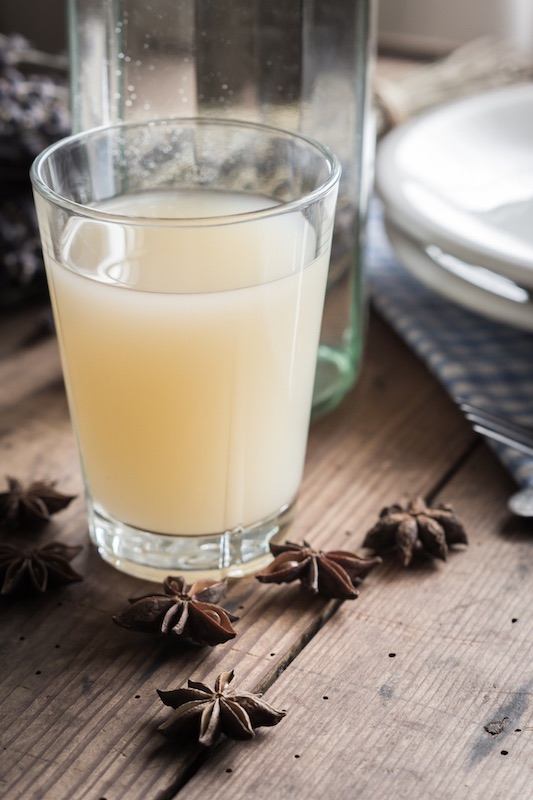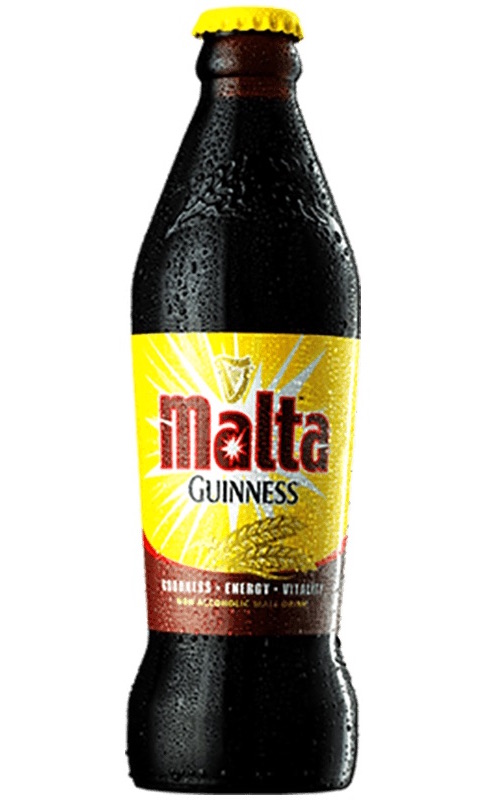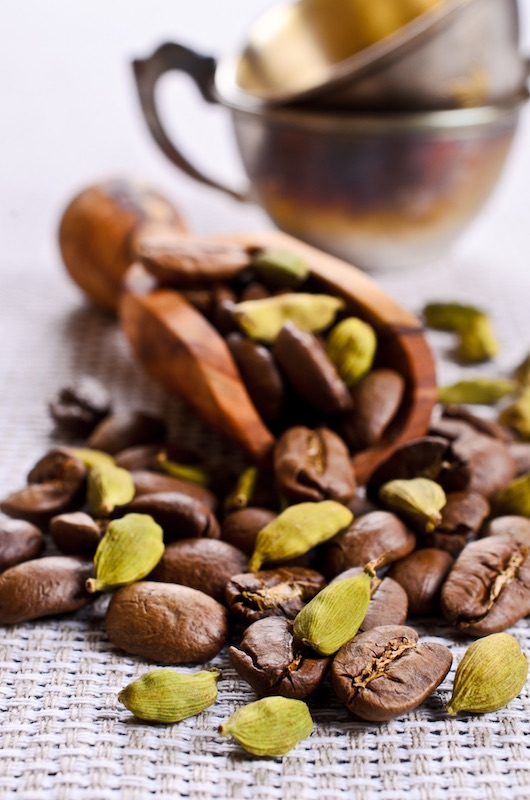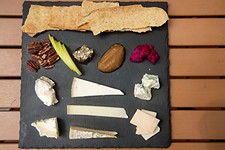World Cup Cocktails
A drink for each of the 32 teams in the tournament
By R.T. Frank, 7:01AM, Fri. Jun. 8, 2018
Sports and drinking have one thing in common: they both provide a sense of community. We toast our victories, and commiserate our defeats … like the U.S. not making the World Cup. Here is how the rest of the world drinks: boozy, bitter, hot, cold, or otherwise.
Argentina
Fernet and Coke
A riff on a highball, this signature drink combines bitter Fernet Branca and Coca Cola. Fernet Branca is often consumed as a digestif, or as a shot, but pairs well here with the sweet cola.
Australia
Instead of going with the obvious Fosters beer and making a dumb joke about how it’s "Australian for beer," this summer you should try to find a Victoria Bitter. While a subsidiary of Fosters, Victoria Bitter is made with native barley and hops. The beer itself, a bitter lager, is built for blazing Australian summers … not unlike the weather here in Austin.
Belgium
Jenever
The forefather of gin, the Belgian Jenever lies somewhere between a London dry and a lowlands Scotch. A blend of neutral spirits, malt-wine (an impurity-laden spirit made from various grains), and botanicals, the spirit has a thick mouthfeel and a somewhat smoky flavor to it, and combines well with the juniper, the namesake herb. Depending on your preferences, Jenever is good neat, on the rocks, or in a highball with either ginger ale or club soda.
Brazil
Caipirinha
Though the ingredients are very similar to a classic daiquiri, the Caipirinha is a national drink of Brazil. Made using Cachaca, it has an entirely different flavor profile. The spirit is made from cane juice, as opposed to the traditional molasses.
Caipirinha
[Note: This recipe is an R.T. Frank interpretation of the classic cocktail.]
2oz Cachaca
½ Tablespoon sugar
1 lime
•Line the bottom of a rocks glass with sugar
•Cut the lime into eight pieces
•Lightly muddle the lime wedges, making a paste with the sugar
•Slowly add Cachaca and crushed ice, continually stirring
Colombia
Aguardiente
Roughly translated to "firewater," Colombian aguardiente is a cane spirit that is sweetened and flavored with anise. Most similar to Sambuca, aguardiente generally falls between 60 and 70 proof and is less viscous than its Italian cousin. This spirit is best served neat.
Costa Rica
Imperial
Light-bodied, low ABV lagers and sports go hand-in-hand, and in Costa Rica, Imperial is no exception. The brewery has been in operation for the better part of a century, but in March 2017, it became the world’s first water-positive brewery by protecting, conserving, and producing clean drinking water within the country.
Croatia
Rakia is a popular fruit brandy from the Balkans. Normally served neat, this white brandy is made from grapes, plums, or apricots. Texas-based Dorćol Distillers is one of the first American distillers to sell their version, Kinsman, made with apricots.Denmark
Carlsberg
As far as European pale lagers go, Carlsberg lines up nicely with other big names – slightly less bitter than a Heineken, a little less sweet than a Stella Artois. Carlsberg has a low ABV and is served in a classic green bottle; a very sessionable beer for a 90-plus minute match.
Egypt
The vast majority of Egyptians do not consume alcohol, and what little is consumed in the country is sold by permit only. Heavy taxes on imports prevent quality products from entering the country, and low demand prevents good spirits from being made. Sodas and fruit juices (similar to agua frescas) are popular at sporting events, though wine growers and producers are slowly gaining ground in the country.England
Here in the United States, the ubiquitous G&T has fallen out of popularity in favor of lighter options. However, the English version of Schweppes tonic, long considered the gold standard, is made with half the sugar it is in the United States. With the craft cocktail boom, the quality of ingredients has dramatically increased – not just in spirits but in mixers as well. Artisanal tonics come in a variety of interpretations, many far sweeter, and closer to the English version, than the tonics Americans are used to.France
Pastis and Water

Germany
Radler
The exact origins of the Radler is unclear, but it’s German for cyclist, and it’s served to riders to both quench and fortify. More commonly known as a Shandy in the States, pre-bottled options are available everywhere nowadays. If you have some fresh lemons, you can’t beat mixing your own, and light lagers and pilsners work best.
Iceland
Brennivin
Nicknamed the Black Death for its simple, dark label, this caraway-infused liquor is only recently making its way to America. A type of aquavit, it is traditionally served cold as a shot.
Iran
Iran has been under prohibition since 1979, but it is attributed as the birthplace of the Shiraz grape variety. Shiraz, more commonly known as Syrah, is now grown all over the world, but most specifically in the western United States and France.Japan
THE Highball
Now its own umbrella term for any spirit mixed with any soda, highballs are very popular in Japan, a country going through a craft cocktail revolution not unlike our own. This simple drink is criminally under-ordered, so … whiskey, club soda, and ice.
South Korea
Soju
Wildly unregulated, soju is hard to define. Traditionally made from fermented rice, it is also made with potatoes, grains, or even tapioca. Slightly sweeter, more viscous, and roughly 20% ABV, soju is often compared to vodka. In some states (Texas not included), it is legal to serve without a liquor permit because of its lower proof. Soju comes in a variety of flavors like peach, citrus, and apple, and fits well in place of vodka in many drinks – spritzes in particular.
Mexico
Because of our immediate proximity to Mexico, just about everyone has an idea of what drinking in Mexico looks like. Whether it’s a beer like Modelo, Tecate, Sol, Corona, or Pacifico, or something stronger like tequila, mezcal, or sotol, raise a drink in support of our Southern neighbors for this World Cup.Morocco
Mint Tea
Though not technically a dry country, Morocco does not consume much liquor outside of the tourist industry. One of the more popular beverages there is mint tea (a green tea and spearmint combo), usually heavily sweetened with sugar and served hot. Garnish with a fresh sprig of mint.

Nigeria
Just like here at home, soft drinks are very popular in Nigeria. Big sellers include familiar brands like 7-Up, Fanta, and Coca-Cola, but also unfamiliar ones like Guinness Malta. Similar to beer, Malta is made from malted barley and wheat, but it’s not fermented and is nonalcoholic. Sweet and somewhat bready, it’s marketed as energizing and nutritious.Panama
Central America produces some of the best rum in the world, and Panama in particular is making some amazing white rums. Distilled in a column still and lightly aged, Cana Brava and Carta Vieja are brands to watch for. Try either in a classic Daiquiri or an Old Cuban.Peru
Pisco is a white brandy made in Peru, and generally is only said with the word sour to follow. It can be made from eight different types of grapes, with Quebranta being the most popular. Part of its definition is that it cannot be barrel-aged, which puts a lot more demand on the grapes used for depth of flavor. While a cognac spends years in casks to smooth out imperfections, Pisco has to come out right the first time.Pisco Sour
[Note: This recipe is an R.T. Frank interpretation of the classic cocktail.]
2oz Pisco
¾ oz Lemon juice
¾ oz Simple Syrup
1oz egg white or Aquafaba
•Combine pisco, lemon, and simple in a cocktail shaker
•Add ice, and shake
•Strain out the ice
•Add egg white
•Shake until emulsified
•Strain into martini glass
Poland v. Russia
Battle of the Vodka Giants
Both countries claim to be both the birthplace and the biggest producers of the most authentic vodka. But in reality, most of the vodka consumed in the United States is not made in either country. Smirnoff, one of the largest brands, is made in Illinois; Grey Goose is from France; Ketel One is from the Netherlands; Absolut and Svedka are Swedish. Tito’s is made in a nondescript building off of 183, right here in Austin. Whatever your preference, toast the originators.
Portugal
Summertime calls for zippy, high-acid whites, and Portugal has you covered. Enter the gas station and bodega all-star: Vinho Verde. Lightly effervescent and with mid-to-high acid, this wine region from the north of Portugal produces a solid wine for a great price.
Saudi Arabia
Alcohol is completely banned in Saudi Arabia under Muslim law. Thankfully, Saudi Arabia has viewers covered for the 7am matches. Coffee, especially seasoned with cardamom, is an exceedingly popular beverage in Saudi Arabia. Unlike most preparations familiar to Americans, coffee is often boiled, and it’s very strong. Consider adding this syrup to your coffee or cold brew.Senegal
Senegalese Bissap, named after the hibiscus flower, is a cold tea made from the dried petals. At times served spiced with cloves, cinnamon, and ginger, this brightly colored tea is best served with lemon and sugar, and here in the United States it’s often sold as blends. Whether mixed with green or black tea, it is worth trying on its own.Serbia
Like much of the world, Serbia is in the middle of a craft beer revolution. Long dominated by mass-produced brands like Jelen, small breweries are opening all over Belgrade and taking their corner of the beer market from the MillerCoors-owned company. The small-batch brews haven’t made it Stateside, but you can still celebrate the national team with your favorite locally-produced beer.Spain
Kalimotxo is an odd combination: red wine and Coca Cola. Known as a poor-man's’ sangria, it is a surprisingly good way to finish off a bottle of red wine the next day. It works best with cheap and dry red wines, like Malbec and Tempranillo, and Mexican Coke.Sweden
While there are some Swedish-made beers, most are relatively low ABV. Many Swedes prefer to drink apple or pear-based cider instead. Unlike a dry French cider, a full-bodied English pub style cider, or a funky Spanish cider, Swedish ciders definitely fall on the sweeter side of the spectrum.Switzerland
Heavily influenced by its neighbors, Switzerland is home to both amazing wine and phenomenal beer. For wines, look for whites from the shores of Lake Geneva. For beers, go for dark dunkels.Tunisia
Though a Muslim country, Tunisia is on the more liberal side of the law. Known for their muscat and rose, this north African country is gaining attention from the wine world. Look for wines from the northern Mornag, a part of the Magon Circuit, a string of DOCs in Italy and Tunisia.Uruguay
Annually, Uruguay consumes the most yerba mate per capita: roughly 20 gallons. The tea-like beverage is growing increasingly popular here in the United States, and is praised for its many health benefits, and caffeine content. Yerba mate is served both hot or cold, bottled, canned, or on draft.We're not sure if you knew this, but the World Cup is kind of a big deal. See all our coverage of the planet-wide celebration of fútbol excellence at austinchronicle.com/worldcup.
A note to readers: Bold and uncensored, The Austin Chronicle has been Austin’s independent news source for over 40 years, expressing the community’s political and environmental concerns and supporting its active cultural scene. Now more than ever, we need your support to continue supplying Austin with independent, free press. If real news is important to you, please consider making a donation of $5, $10 or whatever you can afford, to help keep our journalism on stands.
Oct. 19, 2018
Sept. 7, 2018
World Cup, cocktails, World Cup 2018











